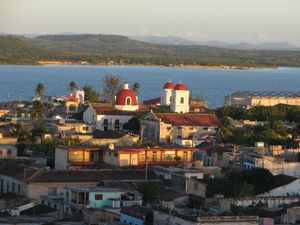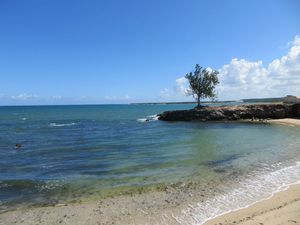

Gibara, Cuba
Explore the gorgeous city of Gibara and discover the fascinating history of its foundation.
The city of Gibara, located around 33 kilometers from the city of Holguín, comprises stunning places such as the charming fishermen village of the same name and better known as La Villa Blanca, due to its old defensive walls which protect them in the Colonial times, and which still has some remains.
Although the origin of the name of Gibara is not very clear, one of the fundamental hypothesis is the one deriving from Jibá, an indigenous word which gives name to a very common type of tree in the area; others think it comes from Jíbaro, of Indian original and that means rustic and untamable.
It is believed that in 1492 Gibara was the port in which Christopher Columbus landed in the Greater Antilles. Although it is generally accepted the closeness of the Bariay Bay as the true landing place, the truth is that this port was the most important one in Colonial times. In 1817 it was left the first stone of the San Fernando Fort above the Punta de Yarey Pike, adjacent to the GIbara Bay and which is known today as Batería de Fernando VII.
The project of the Batería was planned years before, in 1783, with the aim of protecting the commercial boats from the attacks of the pirates. This way, bit by bit, the village of Gibara was born. The need to defend the rich heritage of the most important city for Colonial commerce of the island is what gave place to the construction of the white wall which gave it the name of La Villa Blanca.
From the old wall you can currently see, the Batería de Fernando VII some of the remains of the wall, the strongholds and the ruins of the Cuaterlón, significant samples of the old Colonial defensive system and from where you can enjoy some charming views of the city.
Regarding the colonial constructions you can see in Gibara, after centuries of fights and natural catastrophe, the only Manor House of the sugar mill dating from the 19th century which is still standing and in great state, in the whole province of Holguín is the Casona de Santa María (Auras) Mansion.
Although at first sight the impression of Gibara might be a bit dissatisfactory, it is the Colonial architectural complex of Holguín and the Old Town Center of the city was declared National Monument in 2004 by the Monuments National Committee. Equally, despite the natural catastrophes which have devastated the city, such as the Ike hurricane in 2008, the city keeps reestablishing bit by bit and the previous beauty before the natural disaster is coming back.
Gibara is a city with great cultural beauty. A proof of that are the monuments you cannot miss such as the Gibara Natural History Museum, the Iglesia de San Fulgencio Church, the Neoclassical Mansion which hosts the beautiful Art Museum and the Municipal History Museum, or the presence of two branch libraries and a third Municipal library known as Armando Leyva Balaguer, opened in 1945 and is the oldest one in the province of Holguín.
Explore this old Colonial village and discover the most important cultural aspects, just as the high number of myths and stories linked to the city; without forgetting the most flashy beaches of the village.
Interactive map:
Holguín
What to see:
- San Isidoro Cathedral
- Julio Grave de Peralta Park
- Calixto García Íñiguez Park
- Iglesia de San José Church
- Casa Natal de Calixto García Birth House
- Carlos Manuel de Céspedes Park
- La Loma de La Cruz
- Finca Mayabe Ranch
- Gibara
- Batería Fernando VII
- Iglesia de San Fulgencio Church
- Bariay National Monument Park
- Poor Cinema International Festival
- Rocazul Biopark
- Guardalavaca
- Aldea Taína
- Banes
- Iglesia de Nuestra Señora de la Caridad Church
- Salto del Guayabo Waterfall
- Martí Park
- Cayo Saetía
- Naranjo Bay Natural Park
Beaches:
Museums:
Other nearby destinations:
Why "Trip Cuba"?
Trip Cuba is an organization of Cuban agencies whose objectives are:
- ✓ To make Cuba, its culture and its heritage known.
- ✓ To promote sustainable tourism.
- ✓ To support the local economy, prioritizing direct contact with Cuban agencies.
Travel Agencies
If you are a travel agency or tour operator and you are looking forward to any assistance or collaboration to plan trips to Cuba, rely on our extensive experience
Copyright www.TripCuba.Org © - All rights reserved
All our agencies are duly registered in the National Registry of Travel Agencies of the Chamber of Commerce of the Republic of Cuba.








